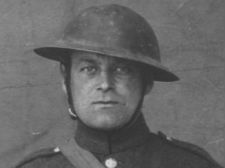Resources
Oxford DNB updates
On 19, Oct 2015 | In Resources | By Nicola Gauld
The September 2015 update of the Oxford DNB adds biographies of 112 men and women who shaped British history from the 13th to 21st century. The update includes a special focus on the First World War during the year 1915. Among the new biographies is that of John Brodie, creator of the ‘Brodie helmet’ which was approved for production in September 1915.
In addition to the following selection, a full list of the new lives is also available—along with the editors’ introduction to the update. Online access to all 112 biographies, together with the ODNB’s 59,558 existing entries, is available free—anywhere, any time—via UK public libraries as well as many university and college libraries worldwide.
September’s update adds 30 biographies of men and women active during the First World War—in combat and on the home front—with a particular focus on events in 1915. New additions include the physicians Louisa Garrett Anderson and Flora Murray who opened the Endell Street Military Hospital, London, in May 1915; it remains the only British army hospital staffed and run by women.
Military inventions from 1915 include the ‘Fullerphone’ designed by Algernon Fuller, which enabled secure communication at the front; and the bowl-shaped Brodie helmet (named after John Brodie) which went into production in autumn 1915. Seven million of these helmets were produced by the end of the war.
Other ‘1915 lives’ include the war correspondent Ellis Ashmead-Bartlett, whose reports from Gallipoli gave rise to the legend of the Anzac forces. The engineer Charles Foulkes oversaw the response to Germany’s first use of poison gas, leading to the British deployment of chlorine gas in September 1915. In the same month the industrialist Godfrey Chetwynd began work on creating the Chilwell munitions factory, Nottinghamshire. Under Chetwynd’s command, nearly 20 million explosive shells were filled at Chilwell by 1918.
Casualties in 1915 include the US-born playwright Harold Chapin who was killed at the battle of Loos on 26 September; Chapin subsequently became known as ‘the American citizen who died for Britain’.
Other war lives include John Simms, who served as the British army’s principal chaplain from August 1914, and three performers of the ‘lost generation’: the actor Basil Hallam—who enjoyed pre-war success as ‘Gilbert, the Filbert’, king of the ‘knuts’—and the composers Cecil Coles (1888-1918) and Ernest Farrar. There’s also the boy soldier Horace Iles (1900-1916) who was killed at the Somme; his biography is now part of school education programmes run by the Commonwealth War Graves Commission.
With the war’s end, the families of Hallam, Coles, Farrar, and Iles received a commemorative medal (above), designed by the sculptor Edward Preston. 1.3 million medals, known colloquially as ‘dead men’s pennies’, were distributed to the next-of-kin of deceased British servicemen.



